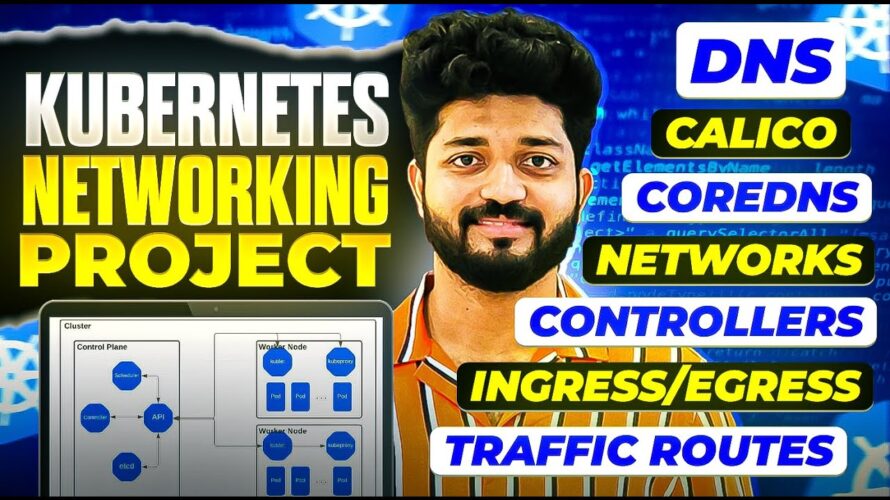Mega FREE Kubernetes NETWORKING Project||Kubernetes In-depth Concepts||Free 2 hours Masterclass
- 2024.08.26
- コンテナ化

𝐖𝐡𝐲 𝐋𝐞𝐚𝐫𝐧 𝐃𝐞𝐯𝐎𝐩𝐬 𝐟𝐨𝐫 𝐅𝐫𝐞𝐞 𝐟𝐫𝐨𝐦 𝐭𝐨𝐦𝐨𝐫𝐫𝐨𝐰 𝐨𝐧 𝐦𝐲 𝐲𝐨𝐮𝐭𝐮𝐛𝐞 𝐜𝐡𝐚𝐧𝐧𝐞𝐥 https://www.youtube.com/watch?v=__84aJt8nMw&t=5s
Kubernetes networking is a critical component of the platform that enables communication between containers and services within a cluster. It provides a way for pods to discover and connect with each other, regardless of their physical location or network configuration.
Here are some key concepts and components of Kubernetes networking:
Pod Network Interface (CNI):
A plugin that provides networking capabilities to pods.
Responsible for assigning IP addresses, configuring routes, and enabling communication between pods.
Popular CNI plugins include Calico, Flannel, Weave Net, and Cilium.
Service:
A logical abstraction that represents a set of pods.
Provides a stable network endpoint for accessing a service.
Uses a load balancer to distribute traffic across the pods.
Can be exposed to the internet using a service type like NodePort, LoadBalancer, or Ingress.
Ingress:
A reverse proxy that provides a single entry point for external traffic.
Can be used to route traffic to different services based on URL paths, hostnames, or other criteria.
Supports features like load balancing, SSL termination, and rate limiting.
Kubernetes DNS:
Provides DNS resolution for pods and services within the cluster.
Allows pods to resolve hostnames to IP addresses.
Uses CoreDNS or kube-dns as the default DNS server.
Network Policies:
Define rules for controlling network traffic between pods.
Can be used to isolate pods, restrict access to certain services, and implement security policies.
Can be applied to pods, namespaces, or labels.
Additional Considerations:
Network Performance: The choice of CNI plugin and network configuration can significantly impact network performance. Factors like latency, throughput, and scalability should be considered.
Security: Network policies and other security measures should be implemented to protect the cluster from unauthorized access.
Hybrid and Multi-Cloud Environments: Kubernetes networking should be able to handle hybrid and multi-cloud deployments, where pods may be running on different infrastructure providers.
How to attend this free course from tomorrow??
📍Subscribe and hit the bell icon – https://www.youtube.com/watch?v=__84aJt8nMw&t=5s
📍All live sessions will be only on youtube – https://www.youtube.com/watch?v=__84aJt8nMw&t=5s
📍 For Documents and Job Updates – https://t.me/+52rUw_MHUcg5NzE1
Note : The live links for this weekend sessions are available
-
前の記事

Surface Laptop 7 Long Term Review 2024.08.24
-
次の記事

Office 365 Admin Essentials: Tips, Tricks & Best Practices | Managing Licenses, Groups & Policies 2024.08.26